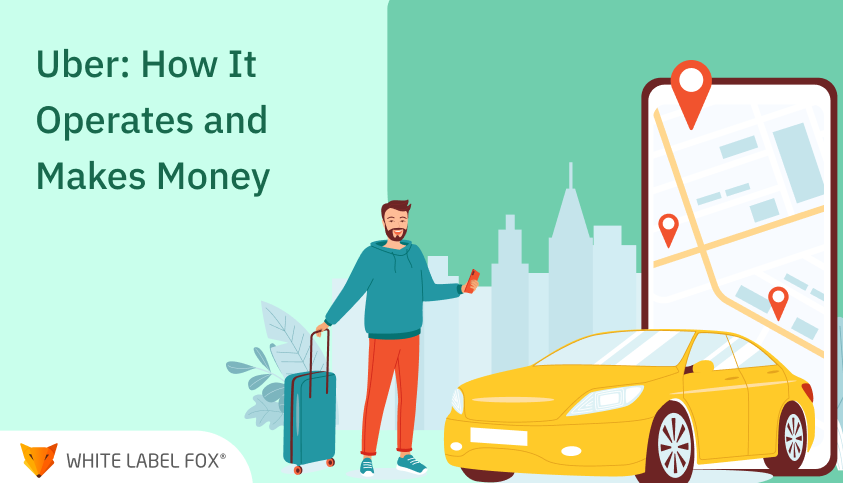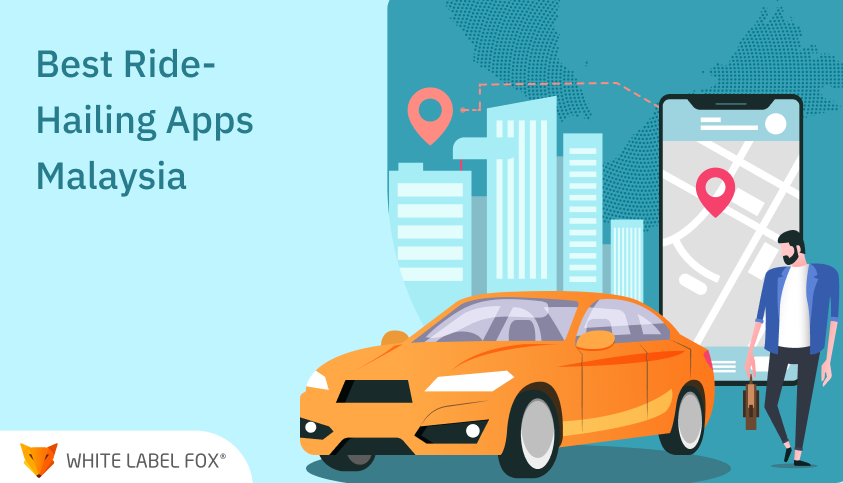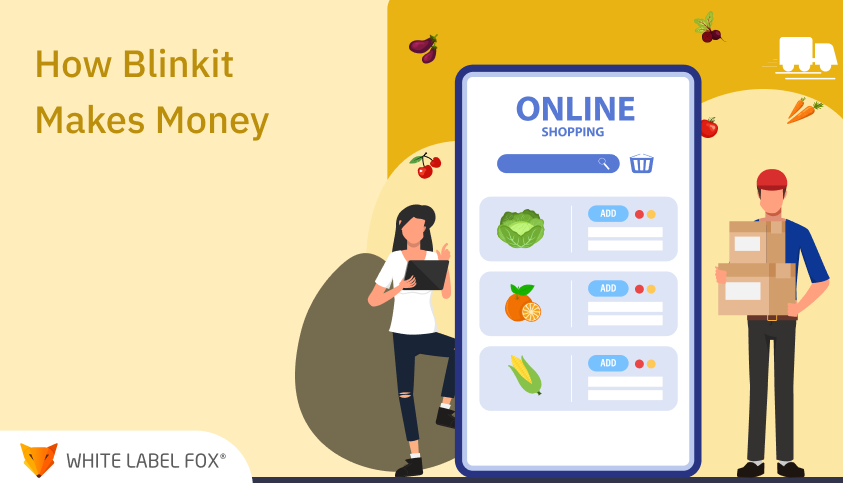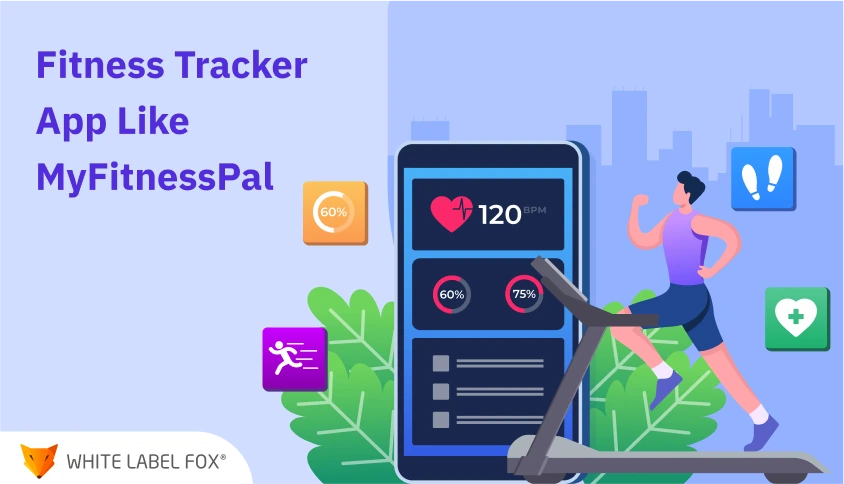Uber has changed urban mobility, is the flagship of the sharing economy, and has inspired millions of companies and entrepreneurs. Having emerged as the leader in its segment, Uber has effectively defined new norms of easy availability, quick service, and cheap rates. The company still changes consumer behaviour and contributes to the perception of on-demand services as a norm in modern society. Along with ride-hailing, Uber has expanded its services, including UberEats, a food delivery service that mirrors ride-hailing efficiency.
The major plus for Uber’s business model is its apparent straightforwardness and the possibility of expanding it. Applying technology, Uber allows people to book a ride and get picked up by the driver, skipping the intermediate of a taxi company. This model has given consumers a better option and has created good business for drivers and courier companies.
In an Uber structure, entrepreneurs are attracted to the adaptable business model with low investment in fixed assets and firm infrastructure. Further, this proposition’s capacity to penetrate different niches, including food delivery, is also evident, proving this model’s solidity.
However, one may wonder what kind of business model Uber employs and what makes its revenue model so alluring to budding business owners. Thus, the current blog post analyzes Uber’s business and revenue model and its ability to maintain market dominance. Read on to discover how and why Uber is changing the world of businesses and why it remains an example for startups.
What is Uber?
Uber is a popular ride-booking app for Android and iOS that allows users to book a cab to reach destination A from destination B with an estimated fare and time of arrival. Moreover, Uber enables riders to split the cost between co-riders, all with a couple of taps on the app.
Indeed, Uber has changed how people travel and given birth to an on-demand economy. The company launched in 2008 when the founders could not find a suitable transportation option on cold nights.

It would be tough to believe, but the company’s success lies in the simple question—what if you could book a cab in advance from your smartphone? Yes, and today, we can see where the company stands. Moreover, Uber has inspired other entrepreneurs to enter the market, and today, all are making headlines regarding the development of urban transportation systems.
Uber boasts over 100 million monthly rides across various nations, and its unicorn is valued at $60 billion. The company offers ride options from affordable bike riders and scooters to Uber Air.
- UberX: The regular and basic Uber ride
- Uber Pool: Shared ride-sharing option
- Uber Black: Luxury cars
- Scooters: Electric scooters
- Uber Transit: Real-time public transport information
- Uber Black SUV: Luxury SUVs with professional drivers
- Uber Air: Flying vehicles
Apart from the above services, Uber also offers other premier services. It entered the online food delivery domain and launched UberEats, which connects diners with nearby restaurants, allows them to order food online, and delivers it to their doorsteps.
How Does Uber Work?
Uber’s business model can be described as a best practice for a two-sided platform that matches drivers’ supply with the riders’ demand through digital technologies.
Here is a step-by-step account of how Uber works from a user perspective.
- The first thing one must do is download the Uber application from the App Store or Google Play Store.
- After the app is installed successfully, they have to register for the app.
- After logging in, users can set where they want to be picked up.
- The application uses GPS to determine the user’s present position; however, users can also input another address if desired.
- Uber has created various transportation services depending on customers’ needs and wishes. If you are on a low budget, use UberX for your transportation needs, need a little more luxury, book an Uber Black, or need space for more passengers, book an UberXL.
- Users input their destination after opting for the type of ride they want. The app gives the possible fare, and the user can order a ride if the fare is acceptable.
- The user is geo-tagged with the nearest driver, and Uber’s algorithm matches the user with the closest available driver.
- However, the users can locate the driver in real-time on the map in the application.
- When the driver is near, the notification appears on the screen.
- They should also ensure that they identify the driver correctly by checking the make and model of the car together with the driver’s name to ensure safety.
- In this case, the passengers can be comfortable and enjoy the ride.
- The app helps the driver navigate the route following the directions to the provided destination.
- Service quality can be maintained since users and drivers can rate each other and provide feedback.
- Drivers also understand that a higher rating can be beneficial when seeking more ride requests in the future.
By offering a seamless, quick, and user-friendly experience, Uber has revolutionized how we travel from point A to point B. Whether heading to work, meeting colleagues, or roaming around the new city, Uber offers a reliable and smooth solution at your fingertips.
Understanding the Uber Business Model
Uber has introduced an innovative strategy in the transportation industry by providing the best platform to connect riders and drivers through the Uber app. As laid out in the previous section, this element examines Uber’s core activities and how the company generates value for its propositions and maintains its competitive advantage.
Customer Segments
Uber serves diverse customer segments, including:
- Riders: People who need efficiency, reliability, and cost-effectiveness in their required carriage services. They include people who use automobiles to commute to work, those who use them for other reasons such as business trips, and people who occasionally need cabs.
- Drivers: Job seekers, especially those interested in virtual or flexible working and those in the platform economy. Flexibility and control of working hours and car ownership: Most Uber drivers are independent contractors who can work shifts, full-time or part-time.
Regarding supply and demand, Uber plays the middle wheel, covering both the consumers—the riders—and the car drivers.
Value Proposition
Uber’s value proposition is multifaceted, addressing the needs of riders and drivers:
- For Riders: Uber is another taxi-hailing application that is cheaper than regular taxi services, allowing riders easy access at any time. Such conveniences as tracking the ride progress, various payment options without cash, and an effective rating system make the application more appealing.
- For Drivers: Uber allows businesses to earn income while maintaining flexibility. Drivers receive constant ride requests, in-app mapping, and control over working hours. Uber also caters to drivers through the availability of training and assistance services.
Channels
Uber uses several channels to reach its customers:
- Mobile App: The primary way riders request the ride and drivers accept the requests. It is easy to use and compatible with many operating systems, including iOS and Android.
- Website: Additionally, Uber’s website provides information, assistance, and materials on services targeting both riders and drivers. It also allows Corporate clients to organize their transportation.
- Partnerships: Partnerships between Uber and businesses, airports, and events enable the company to expand its operations and incorporate its services into various spheres of an individual’s life.
Key Activities
The core activities that enable Uber’s operations include:
- Platform Development: Updating the new and existing app and the backend systems to optimize the user experience and operations.
- Driver Recruitment and Retention: The strategies used by the company to attract more new drivers and to ensure that the current drivers remain loyal and committed through incentive and support programs.
- Marketing and Promotions: These are campaigns aimed at getting new passengers and drivers and promotions that increase a company’s and brand’s popularity.
Key Resources
Uber relies on several key resources to function effectively:
- Technology: The app and its algorithms make ride pairing, route guidance, and payment handling possible.
- Data: A lot of information about the rider and driver activity assists in making changes in the organizational structure and enhancing the service quality.
Cost Structure
Uber’s costs include:
- Operational Costs: Costs that pertain to app maintenance, customer support, and marketing efforts.
- Driver Incentives: Bonuses and promotions for drivers to get more drivers for transportation services.
- Regulatory Compliance: Policies and measures costs put in place to ensure compliance with the local transport laws and regulations.
This analysis shows that the different components of Uber’s business model work hand in hand with using technology, customers, and strategic partnerships to build a successful and sustainable business firm.
Dissecting Uber’s Revenue Model

Uber’s revenue model is elaborate and highly creative, as the company operates multiple streams of income that guarantee the correct financial returns. This section examines Uber’s various revenue sources and explains how each assists in making the firm profitable.
Commission on Rides
Let’s take Uber, for example. Its main source of revenue is the commission it takes for each transaction. As is common with other online marketplaces, Uber also takes a cut of the fare for services provided to riders. These commissions differ with the city and the type of ride offered to the client, but they may be as low as 15% or reach 30%.
Food Delivery Platform (UberEats)
The next one is UberEats, a food delivery service subsidiary of Uber Company. Uber Eats is a food delivery company where the company works hand in hand with restaurants to deliver food to their customers. This is done by charging delivery fees from customers and service fees from restaurants and taking advantage of any surge in demand to charge a premium.
Freight and Logistics Services (Uber Freight)
Uber Freight is a digital marketplace that directly matches shippers with truck drivers to provide freight transport solutions. Uber Freight renders freight services whereby supply chains and prices are arranged, which benefits several companies and generates a lot of income for Uber.
Surge Pricing
Another vital income source is surge pricing or dynamic pricing. Uber also uses a surge pricing system, especially during rush hour, holidays, or bad weather when the number of users is high. This attracts more drivers to the road and increases revenues hugely during these periods.
Subscription Services (Uber Pass and Uber for Business)
Uber also offers additional services, such as subscription services, including Uber Pass and Uber for Business. Uber Pass is a subscription product that gives riders options such as lower trip prices and free delivery from UberEats. Uber for Business is a business-to-business product that provides companies with specific mobility options and earns money from a monthly subscription fee and a commission for every ride.
Advertising
This new revenue model takes advantage of a large client base of Uber users to generate other income avenues through adverts.
Uber Rentals
Uber can provide rental services by partnering with rental car companies. Uber users can rent a car through the app for a predetermined time. Every rental scheduled using Uber’s platform generates a charge or commission for Uber.
Uber Rewards
Through the Uber Rewards loyalty program, customers may accrue points for each dollar they spend on qualified Uber Eats and Uber Rides. Uber has many brand partnerships, and users can exchange their points for discounts at these businesses. Uber benefits financially from these alliances and commissions.
Not only does Uber have multiple sources of income, but it also guarantees further development or diversification throughout the various areas of the market. This vigorous strategy ensures that Uber remains stable and responsive to the evolving forces of the ride-sharing and logistics market competition.
How Much Does It Cost to Develop an App Similar to Uber?
The impressiveness of Uber’s successful business model has inspired many business owners to create similar applications. However, when it comes to Uber app development cost, it can be not easy to estimate the full extent of the expenses because several factors need to be taken into consideration, including the features of the app, the technology used in developing the app, and the location of the development team.
This covers the cost of planning, development and designing, configuration, integration, installation, and more. It is essential to note that for those wanting to start an Uber-like business venture in the shortest time possible, it is advisable to use an already existing Uber clone app. These pre-built solutions encompass considerable capabilities, and the primary difference and flexibility make these platform solutions more suitable for many businesses.
Thus, using an Uber clone allows the entrepreneur to start the business without a substantial initial investment and avoid numerous mistakes. It also enables fast market access and the flexibility to use technology to disrupt traditional transport or delivery solutions.
Conclusive Thoughts
Uber is a breakthrough example of a new economy that has disrupted the transport sector and has become a source of inspiration for many other start-ups. The sheer volume of customers and the ways Uber has revolutionized the transportation model while showing flexibility and excellent availability make it even more exceptional in the context of ride-sharing services.
However, no business model is immune to challenges, and new entrants can take advantage of changing market needs and available technologies. If you have a brilliant business idea and want to start one, it is best to do so now. With the help of innovative tech solutions, you can increase the scale of your company and introduce new services that may be interesting to today’s clients.
Contact us so we can assist you in making your idea a reality and how our knowledge and tools will allow you to thrive in today’s on-demand world.
Frequently Ask Questions
Uber follows a platform-based business model, where it connects
riders with drivers via its app. It does not own the vehicles but acts
as an intermediary, facilitating transactions between the driver
(supplier) and the rider (consumer). Uber generates revenue by charging
drivers a commission for each ride completed.
Uber’s business model has four main components:
- Platform: The Uber app connects riders with drivers,
serving as the intermediary.
- Pricing Mechanism: Uber uses dynamic pricing (surge
pricing) based on demand and supply, where fares fluctuate based
on location, time, and traffic.
- Revenue Generation: Uber earns from commissions on rides,
food delivery, freight services, and subscription models.
- Driver-partners: Uber works with independent drivers who
own and operate their vehicles.
- Platform: The Uber app connects riders with drivers, serving as the intermediary.
- Pricing Mechanism: Uber uses dynamic pricing (surge pricing) based on demand and supply, where fares fluctuate based on location, time, and traffic.
- Revenue Generation: Uber earns from commissions on rides, food delivery, freight services, and subscription models.
- Driver-partners: Uber works with independent drivers who own and operate their vehicles.
Uber uses a dynamic pricing system, which adjusts fares based on
supply and demand in a given area. The basic fare is calculated based on
factors like distance, time, and base fare. However, during peak demand
(e.g., rush hours, weather conditions), Uber uses surge pricing
to increase fares, incentivizing more drivers to become available.
Uber has several mechanisms in place to ensure safety and quality for
both riders and drivers:
- Background Checks: Uber conducts thorough background
checks on drivers to ensure they have a clean criminal record
and driving history.
- Ratings and Reviews: Both drivers and passengers can rate
each other after each ride, which helps maintain quality.
- Insurance: Uber provides insurance coverage for drivers
during active trips to protect them in case of accidents.
- In-app Safety Features: Uber includes in-app emergency
buttons, ride tracking, and real-time location sharing for
safety.
- Background Checks: Uber conducts thorough background checks on drivers to ensure they have a clean criminal record and driving history.
- Ratings and Reviews: Both drivers and passengers can rate each other after each ride, which helps maintain quality.
- Insurance: Uber provides insurance coverage for drivers during active trips to protect them in case of accidents.
- In-app Safety Features: Uber includes in-app emergency buttons, ride tracking, and real-time location sharing for safety.
Uber typically takes a commission of 15-30% from each ride fare.
The percentage varies based on factors like region, type of ride (UberX,
Uber Black), and promotions. After Uber takes its commission, the rest
of the fare is paid to the driver. In addition to the commission, Uber
also charges service fees and tolls in some cases.
Uber Eats is Uber’s food delivery service. It connects customers with
restaurants, enabling them to order food via the Uber Eats app. Uber
generates revenue from:
- Commission from Restaurants: Uber takes a percentage of
each food delivery, typically around 15-30%.
- Delivery Fees: Customers are charged a delivery fee,
which varies based on distance and location.
- Subscription Services: Uber Eats offers a subscription
plan, like Uber Eats Pass, which offers discounts on delivery
fees for a monthly fee.
- Commission from Restaurants: Uber takes a percentage of each food delivery, typically around 15-30%.
- Delivery Fees: Customers are charged a delivery fee, which varies based on distance and location.
- Subscription Services: Uber Eats offers a subscription plan, like Uber Eats Pass, which offers discounts on delivery fees for a monthly fee.
Uber has diversified its business model by expanding into new service
areas:
- Uber Freight: A service connecting trucking companies
with shippers. It charges a fee for facilitating freight
services.
- Uber for Business: Provides companies with tools to
manage transportation for employees.
- Advanced Technologies: Uber has invested heavily in
self-driving cars and flying taxis, which could revolutionize
transportation and reduce operational costs in the future.
- Uber Freight: A service connecting trucking companies with shippers. It charges a fee for facilitating freight services.
- Uber for Business: Provides companies with tools to manage transportation for employees.
- Advanced Technologies: Uber has invested heavily in self-driving cars and flying taxis, which could revolutionize transportation and reduce operational costs in the future.
Uber faces competition from several companies, including Lyft in
the U.S., Ola in India, and Didi Chuxing in China. Uber
stays competitive by:
- Expanding its service offerings, like Uber Eats and freight.
- Introducing innovative features, such as Uber Pool
(shared rides) and Uber Elevate (air taxis).
- Constantly evolving its pricing strategy and providing
discounts and promotions to riders.
- Expanding its service offerings, like Uber Eats and freight.
- Introducing innovative features, such as Uber Pool (shared rides) and Uber Elevate (air taxis).
- Constantly evolving its pricing strategy and providing discounts and promotions to riders.
Despite its success, Uber faces various challenges:
- Regulation: Many cities have introduced stringent rules
for ride-hailing companies, affecting Uber's operations.
- Driver Relations: Drivers are classified as independent
contractors, leading to debates over labor rights and fair pay.
- Profitability: Uber has historically struggled with
achieving profitability, as operational costs, marketing
expenses, and driver incentives add up.
- Competition: Competition from local ride-hailing
companies and new entrants makes it difficult to maintain market
share, especially in international markets.
- Regulation: Many cities have introduced stringent rules for ride-hailing companies, affecting Uber's operations.
- Driver Relations: Drivers are classified as independent contractors, leading to debates over labor rights and fair pay.
- Profitability: Uber has historically struggled with achieving profitability, as operational costs, marketing expenses, and driver incentives add up.
- Competition: Competition from local ride-hailing companies and new entrants makes it difficult to maintain market share, especially in international markets.

















